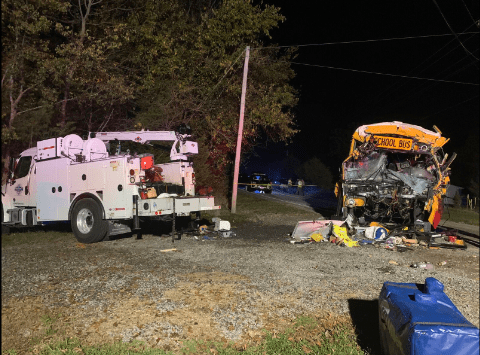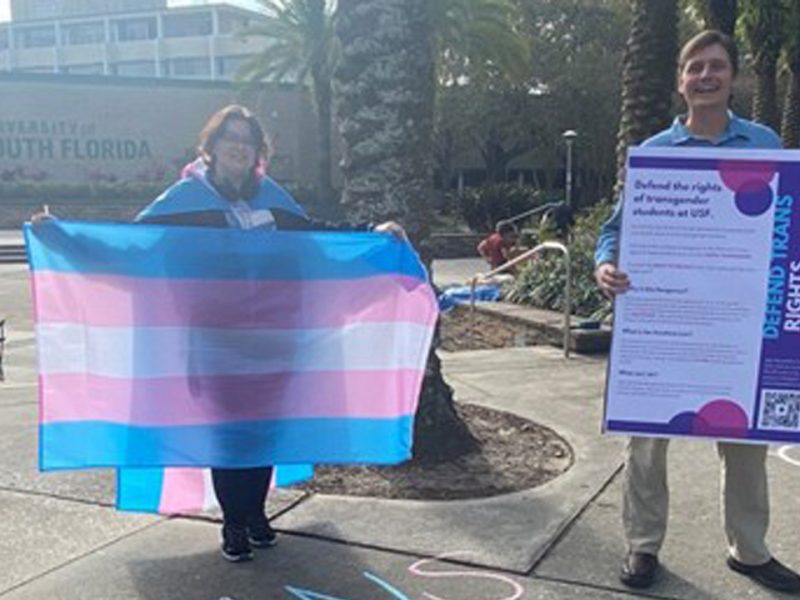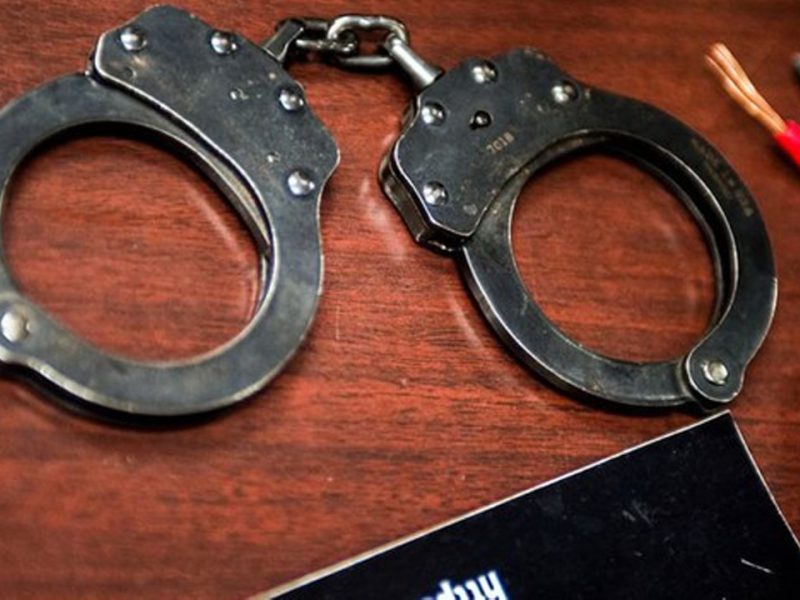National board renews call for seat belts on school buses, but few states require them
KEPR TV | By Chris Daniels, Andrea Nejman and Alex Brauer | January 16, 2023
WASHINGTON (SBG) — Every day, 25 million kids ride school buses to class, and it’s widely considered one of the safest modes of transportation. But federal officials are renewing their call for an additional safety measure on board: seat belts. Spotlight on America discovered less than 10 states require them even as the National Transportation Safety Board (NTSB) and some members of Congress are pushing for that to change.

Dawn Prescott is forever scarred by a school bus crash that claimed her son’s life in Nebraska in 2001. She was a parent chaperone riding on a school bus with her son Benjamin and 26 other school children who were returning home from a band competition. The bus was driving through a construction zone on a bridge when the driver overcorrected for an oncoming vehicle, lost control, and sent the bus plunging 49 feet, eventually landing on its side.
The bus flipped and landed in the creek bed,” Dawn told us. “Everybody ended up being thrown into the ceiling, thrown into each other, and then landing in a heap.

The impact killed four people on board, including Dawn’s son Benjamin, who was just 14 years old, cutting short a life full of potential. Dawn told Spotlight on America her son was known for being inclusive, vibrant and intelligent.
“His nickname was ‘Smiles.’ A lot of kids would say, nobody else talks to me, but Ben always talks to me,” Dawn told us.
Others on the bus suffered injuries ranging from minor to serious. In its investigation, the NTSB identified several safety issues that may have contributed to the crash.
More than 20 years later, Dawn is still fighting for the one thing she believes could have saved his life: a seat belt on board the school bus.
“I know it would’ve made a difference because everyone would have been contained in their seat,” she told us.

Right now, there’s no universal federal requirement for safety belts on school buses.
School bus crashes are rare, which is why the vehicles have long been considered one of the safest modes of transportation on the road. According to the National Highway Traffic Safety Administration, on average six student passengers die in school bus crashes each year, compared to approximately 2,000 children who are killed in motor vehicle crashes annually.
But accidents do happen.
This past November, 16 people were hurt in a crash in Indiana when a suspected drunk driver rear-ended a school bus.
In Perry County, Ohio, a crash sent eight kids to the hospital in 2019. Surveillance video shows the moment the impact sent the kids flying into the air.
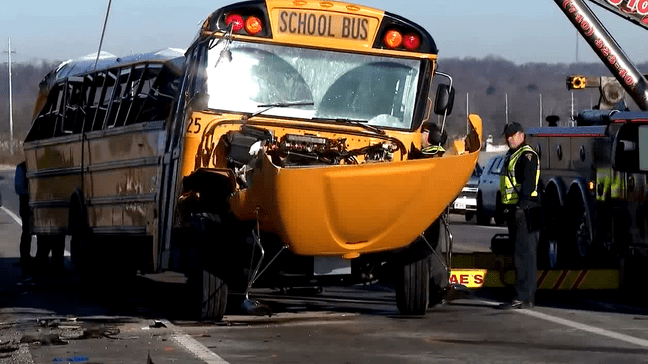
And in 2020, a horrific accident involving a school bus in Tennessee claimed the lives of the bus driver and a 7-year-old girl, and injured 7 other children.
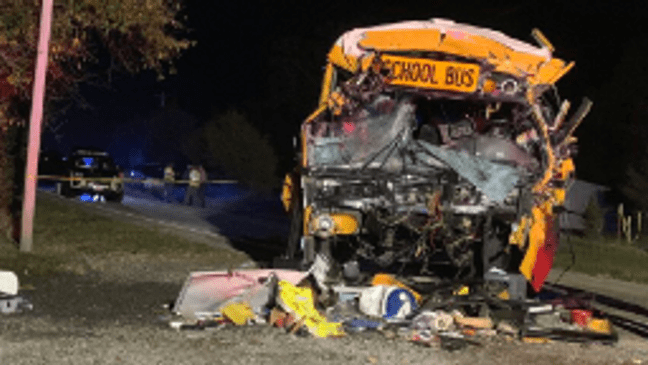
The NTSB wrapped up its investigation of that Tennessee crash this past fall, concluding that seat belts could have protected the students on board. In its report, the agency renewed its recommendation that school districts should start buying buses equipped with 3 point belts.
“The investigation found that several school bus passengers were not seated properly at the time of the crash, which increased their injury risk,” the agency wrote in its findings. “While the school bus did not have passenger lap and shoulder belts, the NTSB found that the belts, if worn properly, would have reduced their level of injury.”
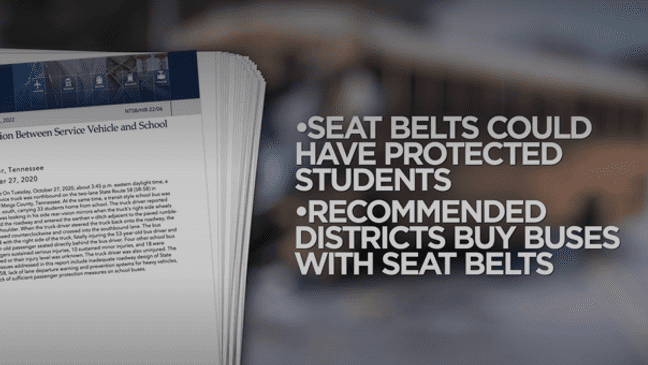
Seat belts are an added safety feature that should have been in place decades ago, if you ask Jane Terry, Vice President of Government Affairs with the National Safety Council.
“We’ve known for decades that seat belts save lives,” Terry told Spotlight on America. “But since school buses have been around, seat belts have not been incorporated in them.”
What do the rules governing school bus safety look like, then? According to the National Conference of State Legislatures, at least 32 states have considered legislation about seat belts on school buses since 2007. Only eight have passed laws:
- Arkansas
- California
- Florida
- Louisiana
- Nevada
- New Jersey
- New York
- Texas
Spotlight on America asked Jane Terry why there hasn’t been a more universal approach.
Unfortunately, too many of our safety laws are written in blood,” she said. “These are the results of crashes that happen in certain states that cause those legislatures and school boards to act. But we don’t need to wait for the crash to occur.

In 2021, Sen. Tammy Duckworth, D-Ill., introduced the “School Bus Safety Act,” which would have required seat belts on buses nationwide to the Senate. The bill did not advance outside of committee. Terry is hopeful that will change during the 2023 legislative session.
But not everyone believes seat belts on school buses are necessary. There’s been debate over whether children can quickly unbuckle themselves to free themselves from emergencies that could include fire and water, or whether first responders would be hampered by efforts to unbuckle trapped children.
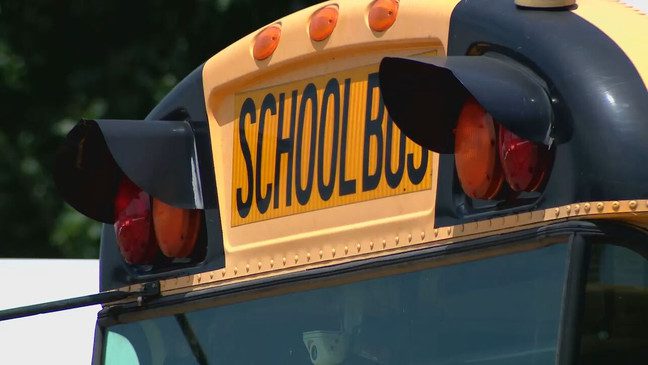
The National Highway Traffic Safety Administration, or NHTSA, has voiced support for seat belts on school buses in the past, but has not taken regulatory action.
The agency has also said that the unique design of school buses already provides safety protection on board without the need to buckle up. It’s because of what’s known as “compartmentalization,” with closely spaced seats and energy-absorbing seat backs, which already provide a form of restraint, similar to keeping eggs in a carton.
But Terry told us the design has limits.
Compartmentalization works really well if a crash occurs from the front of the bus or the back of the bus,” she said. “It does not work when buses are hit from the side.
She added that seat belts may promote safer bus riding by forcing students to be seated, instead of in the aisles or socializing.
Spotlight on America found the decision for many cash-strapped school districts often comes down to money. By some estimates, it can cost up to $10,000 per vehicle to add belts to new school buses, which can already cost upwards of $120,000.
For Prescott, no cost is too high. She believes the risk of deadly crashes and serious injuries will exist until seat belts are universally adopted.

“It’s not a matter of if it’s going to happen,” she said. “It’s a matter of when.”



